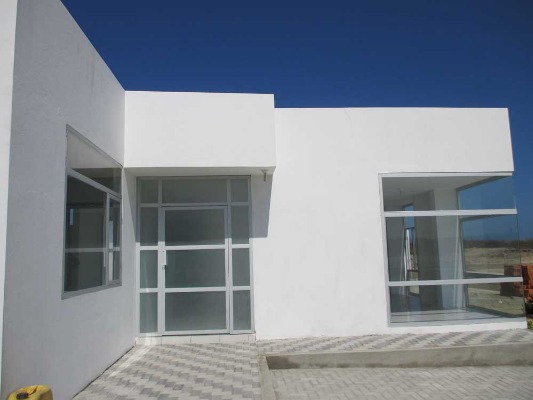Light weekend rains bring limited drought relief, but extended blackout schedule is announced
Editor’s note: For the revised power blackout schedule, go to the Centrosur website and download the pdf.
Overnight rain Saturday night and Sunday morning temporarily reversed the falling water level at the Mazar Reservoir and refilled ponds at Cuenca’s drinking water processing plants in the Cajas mountains. Although the National Meteorology Institute (Inamhi) described the rain that fell in eastern Azuay Province as “mostly light,” it provided some relief to drought conditions.

Water levels have been dropping in recent weeks at the Mazar reservoir on the Azuay-Morona Santiago province border. The reservoir provides water for three hydroelectric plants.
Inamhi weather stations recorded rainfall totals ranging from 4 to 9 millimeters (.2 to .35 inches), with the highest amounts falling in the Paute and Gualaceo area. In a bulletin, the weather service said the area needs an additional 50 to 60 millimeters to make a significant impact on the drought.
During a Sunday visit to the Mazar Reservoir on the Paute River, government officials said water levels rose 20 centimeters at the facility and could rise another 10 as a result of the rainfall. “It was not much, but it has stopped the decline in the water level for a day or two,” said Byron Benalcázar, assistant director of Ecuador’s Electric Power Generation and Transmission office.
The officials, including Environmental Minister Inés Manzano, were touring the hydroelectric facilities on the Azuay-Morona Santiago province border, which include three power generation plants that produce almost 40% of Ecuador’s electricity. Due to dropping reservoir level, production is declining and could stop altogether without more rain.
“We are here today because this facility is so important to our national electricity supply,” Benalcázar said during the visit. “We depend on our hydroelectric plants for 70% of our power supply and all of them are suffering from the drought and low water levels.”
Asked by a reporter about the status of the large Coca Coda Sinclair plant in Napo and Sucumbios Provinces, Benalcázar said it was operating at “reduced levels” as a result of technical problems and the low flow rate of the Coca River. Under optimal conditions he said, Coca Coda Sinclair, should generate about 30% of the country’s electricity but is currently operating at less than half capacity.
One reason for the visit to Mazar was to reassess the government’s electricity rationing program. Last week, the Energy Ministry announced a series of nighttime blackouts, the first last Thursday with four more scheduled this week, beginning Monday, but the country’s Emergency Operations Committee said Sunday that additional blackouts were necessary.
On Monday morning, the COE ordered nationwide daytime blackouts beginning immediately. Service cuts will be from five to nine hours, with schedules determined by local electric utility companies. It also said that the nighttime blackout schedule is being revised and changed will be announced later Monday. Blackouts will to Sunday, Sept. 29 and may be extended, the COE said.
For the Cuenca and Azuay province schedules, go to the Centrosur website and download the pdf.
In a statement, the Energy Ministry and COE said: “Given the deterioration of climate conditions in recent days, it is necessary to redistribute the suspension of electricity service that was previously planned.”
There was some good news on Sunday. Inamhi updated its weather forecast to predict increasing chances of rain in the intermountain valley, including the Cuenca area. It is predicting rain showers for the end of the week and said more are expected through most of October.
















